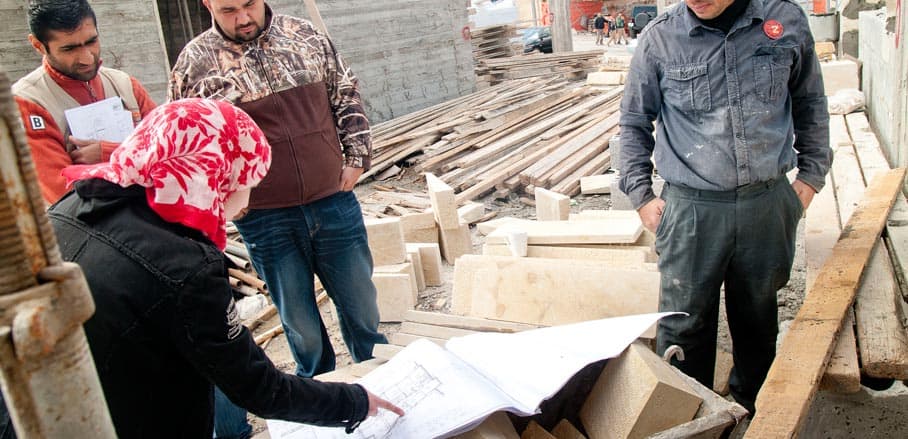How the Lack of Public Transport is Keeping Women in Jordan at Home
How do women get to work when there is no public transport they can safely use? Much too often, they simply do not. Sahar Aloul on what needs to change in Jordan’s transport policies.
In the last decade, women’s economic participation in Jordan has not managed to break the 15 per cent ceiling, despite having one of the highest literacy rates in the Middle East. This is one of the lowest participation rates in the world. Three main structural barriers to women’s entry into the workforce have stood relentlessly in the way of women in Jordan. Next to pay inequity/low pay and the lack of day care, this is the lack of an efficient public transport system that takes their needs and vulnerabilities as women commuters into account.
What are Women’s Needs in Public Transport?
In comparison to men, women commuters, in Jordan and around the world, tend to make shorter, multiple trips, often carrying packages and accompanying young children due to their traditional gender roles as unpaid care takers of their families. As a result of this “trip-chaining”, women’s needs during their journey on public transport are different than men’s, with a high emphasis on safety, frequency, comfort, and flexible tariffs that take into account their multiple stops.
“Yes, I have turned down a work opportunity before because there is no accessible public transportation route where I live and I had to take more than one bus and a taxi to get to work, I also have a child whom I have to drop off at daycare and pick up on the way back, it would be too expensive for me to work, so I stayed home.”
Those are the words, of Safa’a, a young woman in her twenties living in Amman, who sat for an interview two years ago for a study to understand how public transport is impacting women’s lives in Jordan.
The results were alarming. 47 per cent of women who were surveyed in the study turned down job opportunities due to the lack of efficient and affordable public transport. Women in Jordan were saying that they are generally unwilling to go to work or university due to poor public transportation services which left them worn out physically and emotionally, and negatively affected their lives.
As for the women who actually accessed public transportation, they indicated that they did so because they “have no other choice”. A statement that signifies a class dimension of public transport in Jordan, as it excludes those without means from economic opportunities. For if a commuter has access to a private vehicle why would they, especially women, want to endure a transit journey riddled with low frequency, lack of information, over-crowdedness, uncleanliness, high tariffs in comparison to income, weak complaint and feedback mechanisms, and a 62 per cent chance of harassment.
How Can Jordan’s Public Transport Respond to Women’s Needs?
For years, Jordan’s public transport system has suffered due to lack of prioritisation by the government, structural and infrastructural challenges, and weak policies. Therefore, it comes at no surprise that gender policies in transport have just started budding.
Recent attempts by international and national organisations to cater for these needs through a gender sensitive public transport system are finally gaining a foothold. These include an intervention led by the World Bank to develop a transport reporting app to function as a hotline to report infringements on a code of conduct for the sector developed by the Bank and the Ministry of Transport in 2019.
On the policy level, an overarching national framework for gender sensitive public transportation has just been launched by the ministry and national NGO SADAQA, a women’s economic rights advocacy group working on removing barriers to entry for women into the workforce namely transportation and care work. The framework is supported by UN Women and the EU and was developed after a comprehensive national dialogue process involving all stakeholders. It will focus on legislative reform, increasing women representation in the sector through improving the work environment, applying a gender perspective to national transportation strategies and major infrastructure projects, calling for the implementation of the code of conduct, as well as including women users in planning and policy making with regards to public transport.
In a country where public debt stands at around USD 35 billion, it is not an exaggeration to say ensuring all job seekers, and particularly women, can access public transport, should become a national priority.
